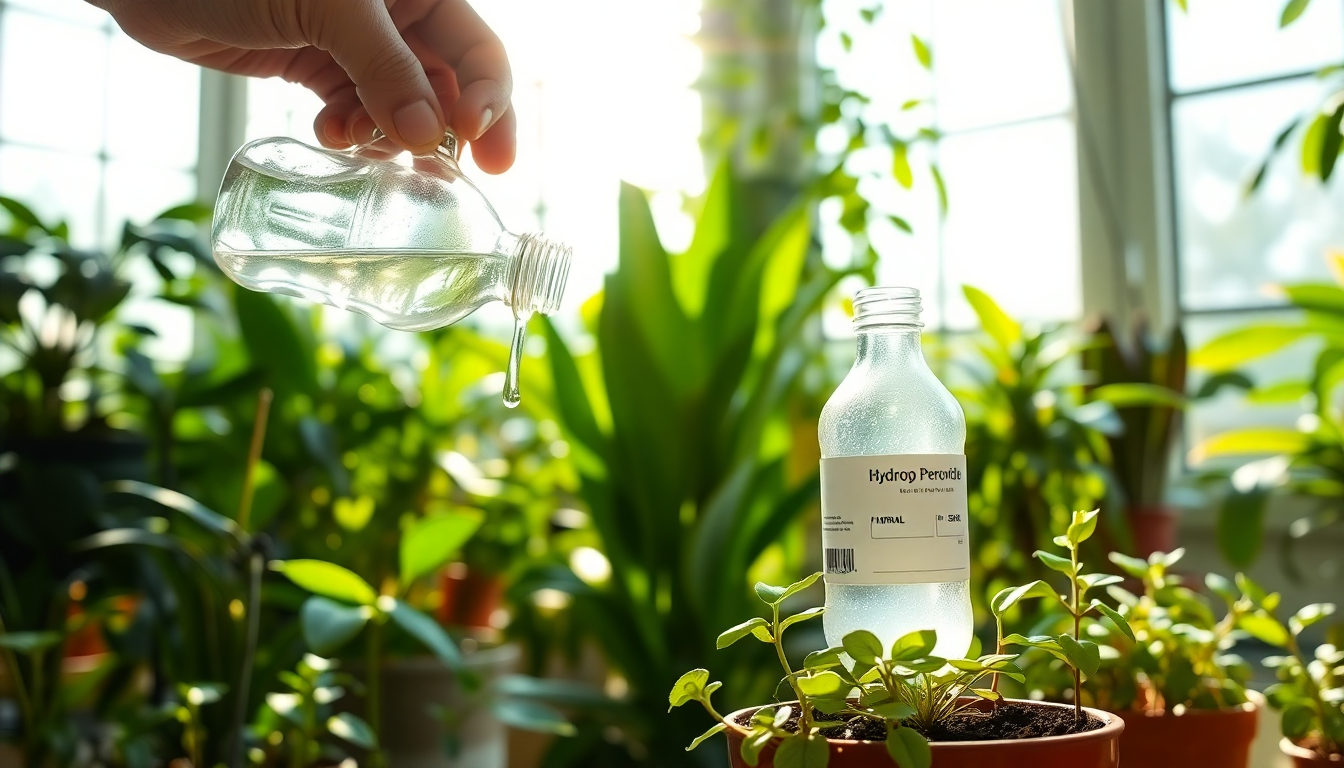As a passionate gardener, I've always been on the lookout for natural and effective ways to keep my houseplants thriving. One of the most versatile and underrated tools in my arsenal is hydrogen peroxide. This simple compound can work wonders for your plant's soil, helping to combat common issues like fungal infections, root rot, and more.
In this comprehensive guide, I'll share the secrets of using hydrogen peroxide to revive your houseplants and keep them healthy for the long haul. Whether you're a seasoned green thumb or a newbie to the world of plant care, this information will be invaluable in helping you create a lush, vibrant indoor oasis.
The Power of Hydrogen Peroxide
Hydrogen peroxide is a powerful oxidizing agent that can be incredibly beneficial for your houseplants. When used correctly, it can:
1. Disinfect and Cleanse Soil
Hydrogen peroxide is an effective natural fungicide and bactericide, making it an excellent choice for disinfecting your plant's soil. By killing off harmful microorganisms, you can prevent the spread of diseases and create a healthier environment for your plants to thrive.
2. Improve Aeration and Drainage
When added to the soil, hydrogen peroxide helps to break down organic matter and improve soil structure. This, in turn, enhances aeration and drainage, which are crucial for healthy root development and preventing issues like root rot.
3. Oxygenate the Root Zone
Hydrogen peroxide releases oxygen when it breaks down, providing a boost of this essential nutrient to your plant's roots. This can help stimulate root growth, increase nutrient uptake, and support overall plant health.
4. Treat Fungal Infections
Many common houseplant ailments, such as powdery mildew and root rot, are caused by fungal pathogens. Hydrogen peroxide can be used as a natural fungicide to eliminate these problems and restore your plants to full vigor.
How to Use Hydrogen Peroxide for Houseplants
Now that you understand the benefits of hydrogen peroxide, let's dive into the practical steps for incorporating it into your plant care routine.
Soil Drenching
One of the most effective ways to use hydrogen peroxide for your houseplants is through soil drenching. This involves mixing a diluted solution of hydrogen peroxide and water, then pouring it directly onto the soil around your plant.
To create the solution, mix 1 part hydrogen peroxide (3% concentration) with 4 parts water. Gently pour this mixture into the soil, making sure to saturate the entire root zone. Repeat this process every 2-4 weeks, or as needed, to maintain a healthy soil environment.
Foliar Spraying
In addition to soil drenching, you can also use hydrogen peroxide as a foliar spray to treat fungal infections on the leaves and stems of your plants. Mix the same 1:4 ratio of hydrogen peroxide to water, and mist the affected areas thoroughly.
Be sure to test the solution on a small, inconspicuous area of the plant first to ensure it doesn't cause any damage. Avoid spraying during direct sunlight, as the hydrogen peroxide can potentially burn the foliage.
Root Soaking
For plants that are struggling with root rot or other root-related issues, a root soaking treatment can be incredibly beneficial. Carefully remove the plant from its pot, gently rinse the roots, and then soak them in a 1:10 solution of hydrogen peroxide to water for 15-20 minutes. This can help to disinfect and revive the root system.
Seed Germination
Hydrogen peroxide can also be used to promote seed germination. Simply soak your seeds in a 3% hydrogen peroxide solution for 12-24 hours before planting. This can help to break down the seed coat, allowing for faster and more consistent germination.
Precautions and Best Practices
While hydrogen peroxide is a natural and generally safe compound, it's important to use it with caution and follow best practices to ensure the health and safety of your plants.
- Always use a 3% concentration of hydrogen peroxide. Higher concentrations can be too strong and potentially damage your plants.
- Avoid using hydrogen peroxide on delicate or sensitive plants, as it may cause leaf burn or other issues.
- Never use hydrogen peroxide on plants that are already stressed or wilting, as it can further exacerbate the problem.
- Always test the solution on a small, inconspicuous area of the plant before applying it more broadly.
- Wear gloves and work in a well-ventilated area when handling hydrogen peroxide, as the fumes can be irritating.
- Store hydrogen peroxide in a cool, dark place, as it can break down when exposed to light and heat.
By following these guidelines and incorporating hydrogen peroxide into your plant care routine, you'll be well on your way to creating a thriving, healthy indoor garden. Say goodbye to fungal infections, root rot, and other common houseplant issues, and hello to lush, vibrant foliage that will bring joy to your living space.
Conclusion
Hydrogen peroxide is a versatile and powerful tool that every houseplant enthusiast should have in their arsenal. By using this simple compound to disinfect soil, improve aeration and drainage, and treat fungal infections, you can unlock the full potential of your indoor plants and create a lush, thriving oasis in your home.
Remember to always use hydrogen peroxide with caution, following the best practices outlined in this guide. With a little bit of care and attention, you'll be able to revive even the most struggling houseplants and enjoy the beauty and benefits of a healthy, vibrant indoor garden for years to come.
So, what are you waiting for? Grab some hydrogen peroxide, roll up your sleeves, and get ready to transform your houseplants into the healthiest, happiest versions of themselves. Happy gardening!


0 comments